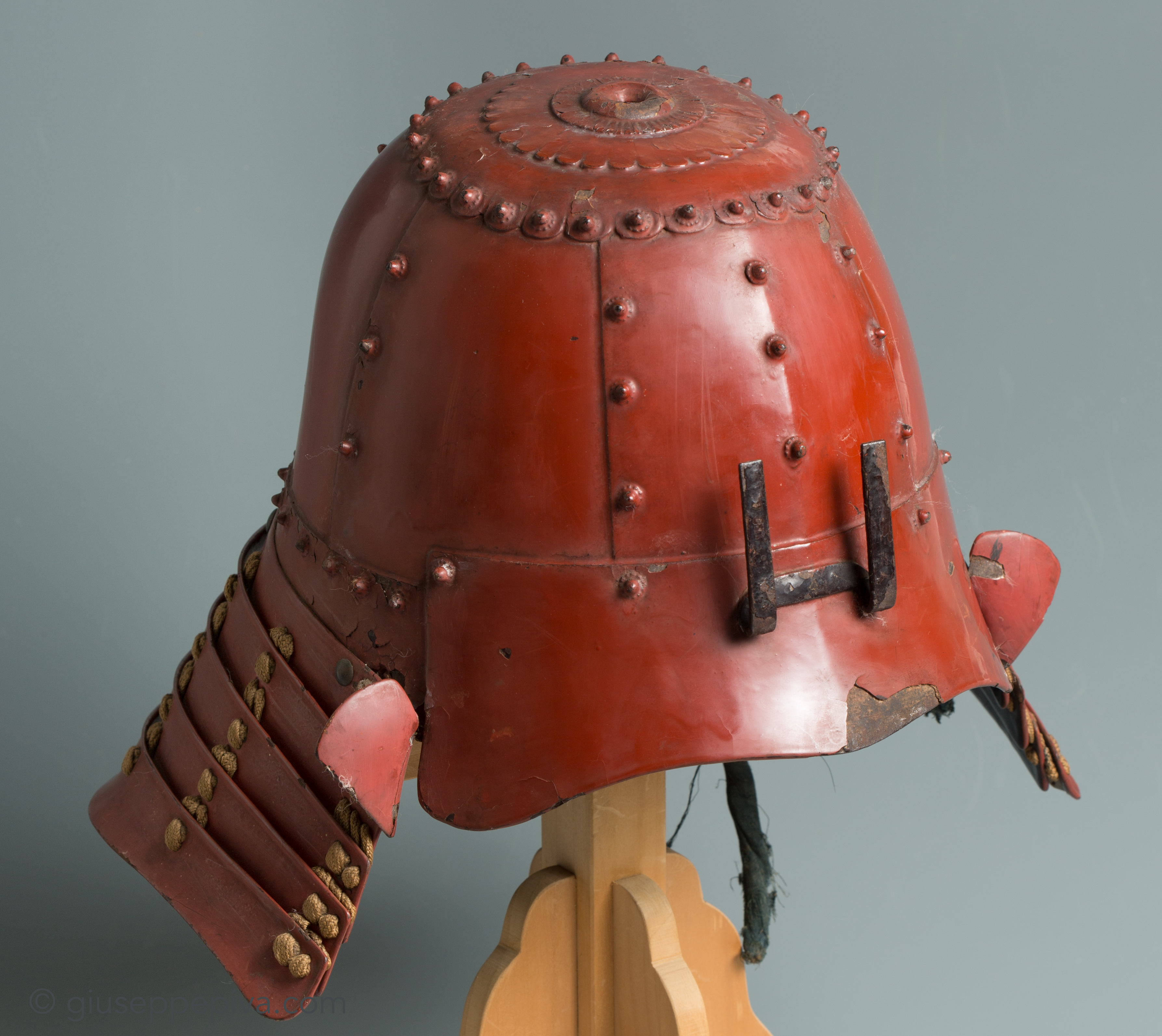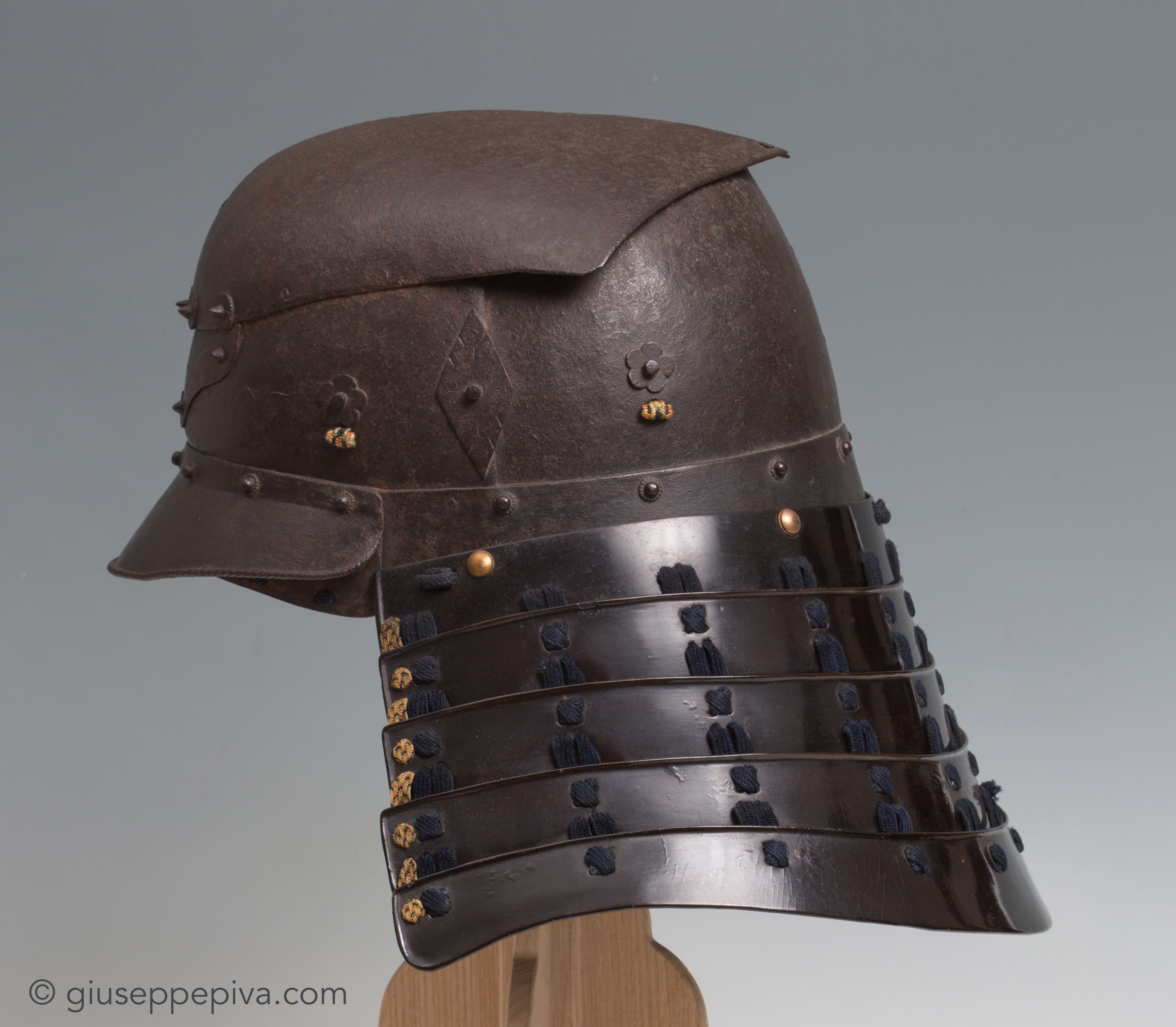Kabuto from the Saika school of armorers
The members of the Haruta School-the oldest school of samurai armor smiths-who moved to the Kii region in the early years of the Edo period did not confine themselves to odd jobs. They took the name of the village where they settled, Saika, near Wakayama, perhaps called by the local daimyo, Asano Yukinaga, a great fan of armor. Keeping alive the traditions of their region of origin, the members of this school specialized in making samurai helmets (kabuto), essentially producing two types based on a six-plate scheme enriched with appliqués of cut iron (kirigane): The rivets are protruding and we can often find different types of decoration: large shaped applications, silver ageminations and a sort of iron straw that rises on the top.
- Saiga-kabuto. The kabuto designated by the school's name features a six-plate cap topped by another large chrysanthemum-shaped plate, usually made on several levels. The rivets are prominent and there are often various types of decoration: large shaped appliqués, silver altermination, and a kind of iron straw rising from the top. These features, as well as the shape of the kabuto itself, are reminiscent of helmets used in Korea during the same period, which opens up interesting hypotheses about the relationship between the two regions. For this reason, these helmets are sometimes classified as nanban-kabuto, or helmets of foreign inspiration.
- Okitenugui-kabuto. In this case, the helmet is designed with a shape reminiscent of a towel tied on the head, called okitenugui. Very heavy plates were used in the construction of this helmet, which were beaten so that they were slightly curved at the top: This curved surface proved very effective in deflecting blows from firearms.


Copyright © 2016 - giuseppe piva - VAT: 05104180962

